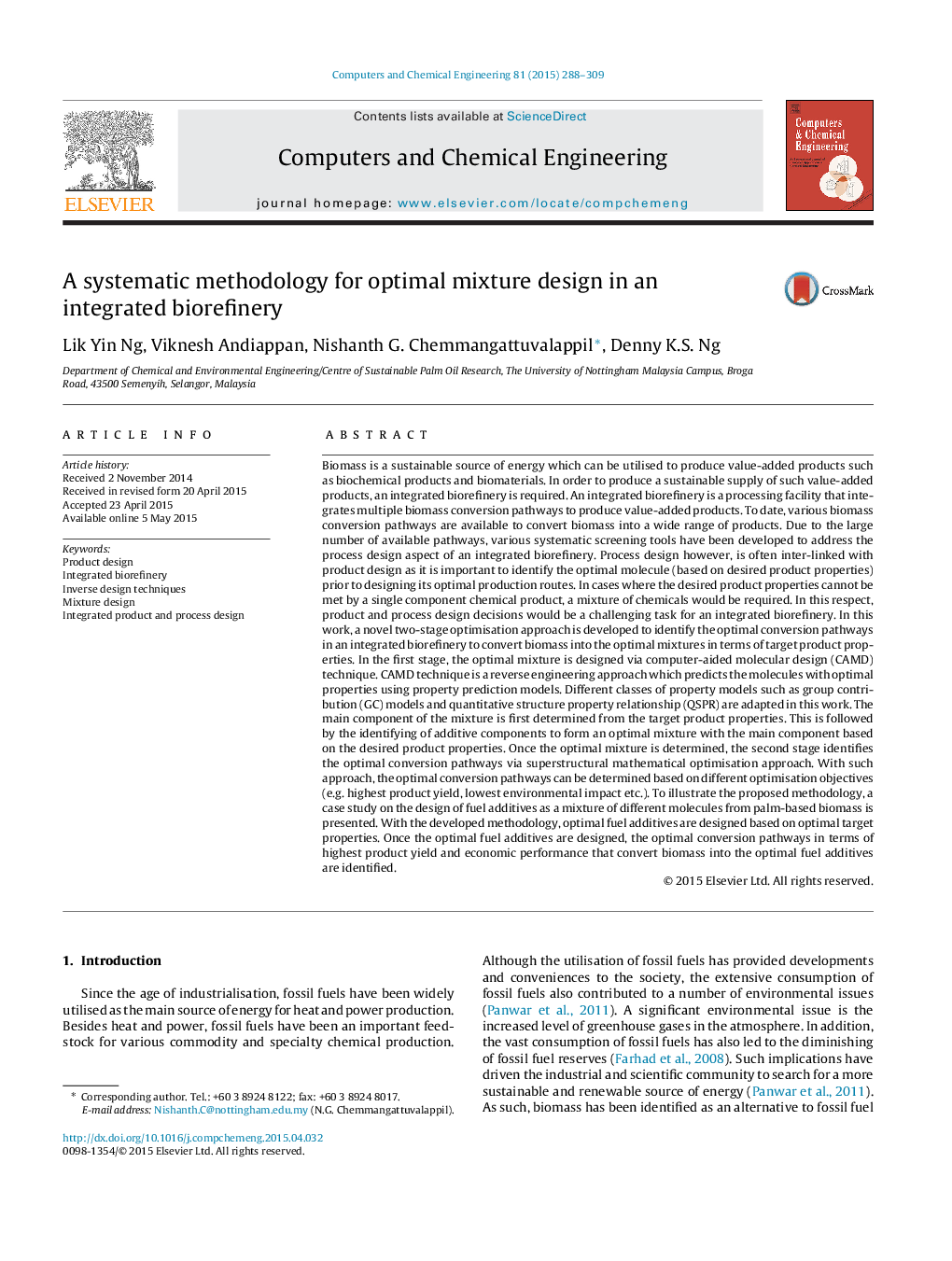| کد مقاله | کد نشریه | سال انتشار | مقاله انگلیسی | نسخه تمام متن |
|---|---|---|---|---|
| 172247 | 458525 | 2015 | 22 صفحه PDF | دانلود رایگان |
• Novel methodology to integrate product design in the design of biorefineries.
• A combination of single component molecular design and mixture design.
• Fuzzy optimisation techniques are used in mixture design.
• Design of reaction pathway synthesis based on multiple objectives.
Biomass is a sustainable source of energy which can be utilised to produce value-added products such as biochemical products and biomaterials. In order to produce a sustainable supply of such value-added products, an integrated biorefinery is required. An integrated biorefinery is a processing facility that integrates multiple biomass conversion pathways to produce value-added products. To date, various biomass conversion pathways are available to convert biomass into a wide range of products. Due to the large number of available pathways, various systematic screening tools have been developed to address the process design aspect of an integrated biorefinery. Process design however, is often inter-linked with product design as it is important to identify the optimal molecule (based on desired product properties) prior to designing its optimal production routes. In cases where the desired product properties cannot be met by a single component chemical product, a mixture of chemicals would be required. In this respect, product and process design decisions would be a challenging task for an integrated biorefinery. In this work, a novel two-stage optimisation approach is developed to identify the optimal conversion pathways in an integrated biorefinery to convert biomass into the optimal mixtures in terms of target product properties. In the first stage, the optimal mixture is designed via computer-aided molecular design (CAMD) technique. CAMD technique is a reverse engineering approach which predicts the molecules with optimal properties using property prediction models. Different classes of property models such as group contribution (GC) models and quantitative structure property relationship (QSPR) are adapted in this work. The main component of the mixture is first determined from the target product properties. This is followed by the identifying of additive components to form an optimal mixture with the main component based on the desired product properties. Once the optimal mixture is determined, the second stage identifies the optimal conversion pathways via superstructural mathematical optimisation approach. With such approach, the optimal conversion pathways can be determined based on different optimisation objectives (e.g. highest product yield, lowest environmental impact etc.). To illustrate the proposed methodology, a case study on the design of fuel additives as a mixture of different molecules from palm-based biomass is presented. With the developed methodology, optimal fuel additives are designed based on optimal target properties. Once the optimal fuel additives are designed, the optimal conversion pathways in terms of highest product yield and economic performance that convert biomass into the optimal fuel additives are identified.
Journal: Computers & Chemical Engineering - Volume 81, 4 October 2015, Pages 288–309
